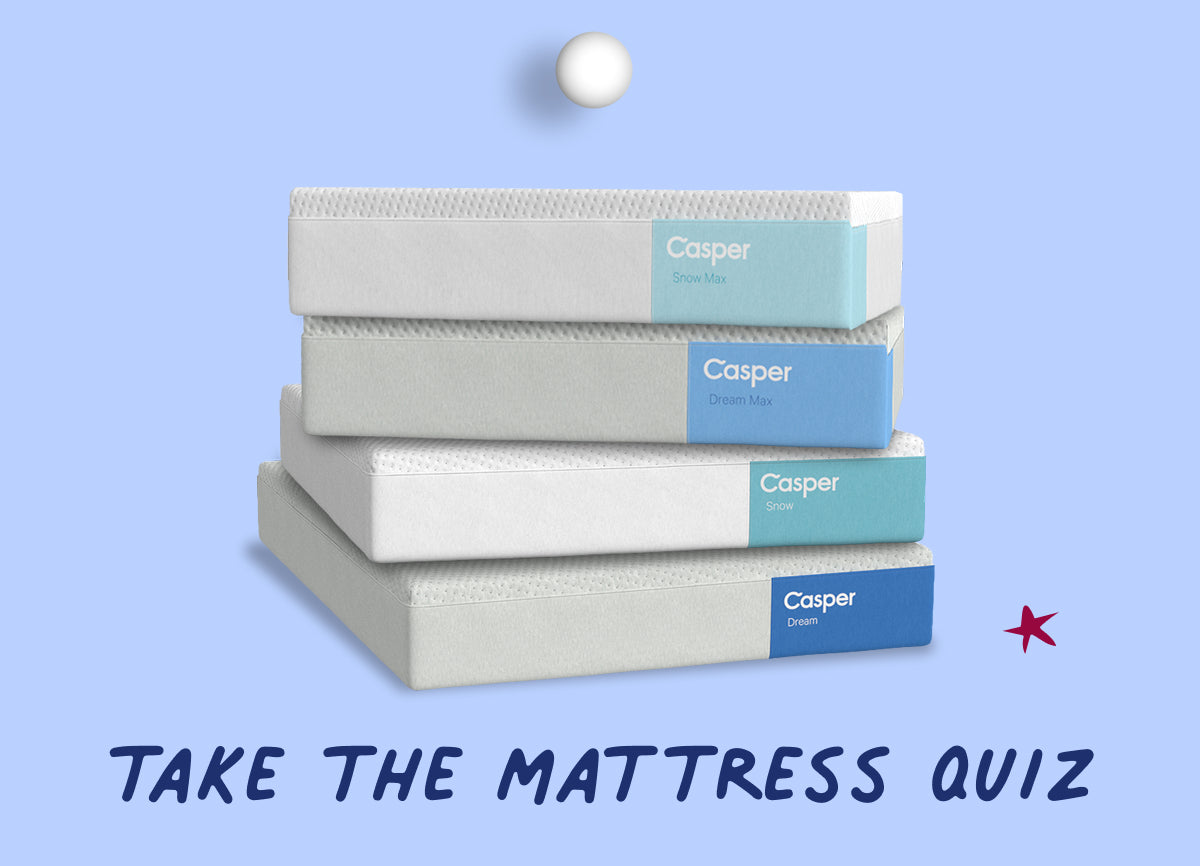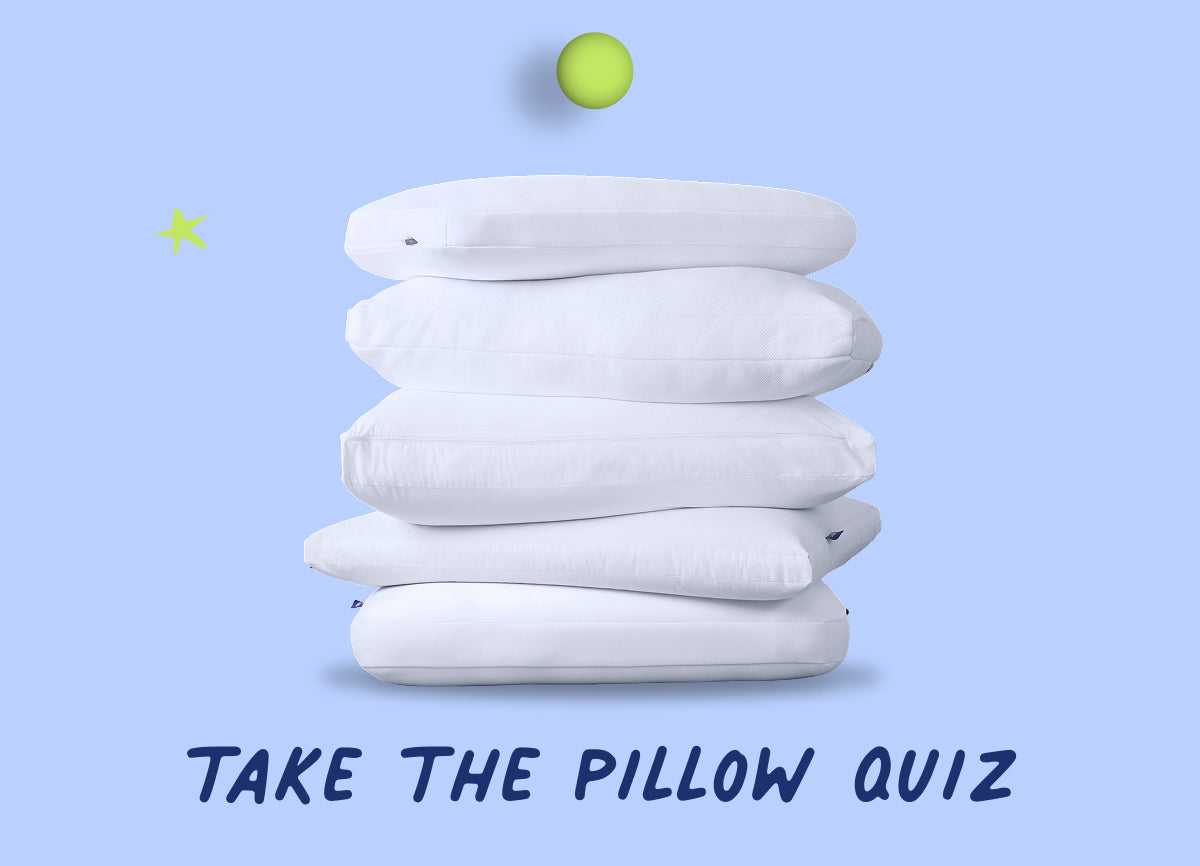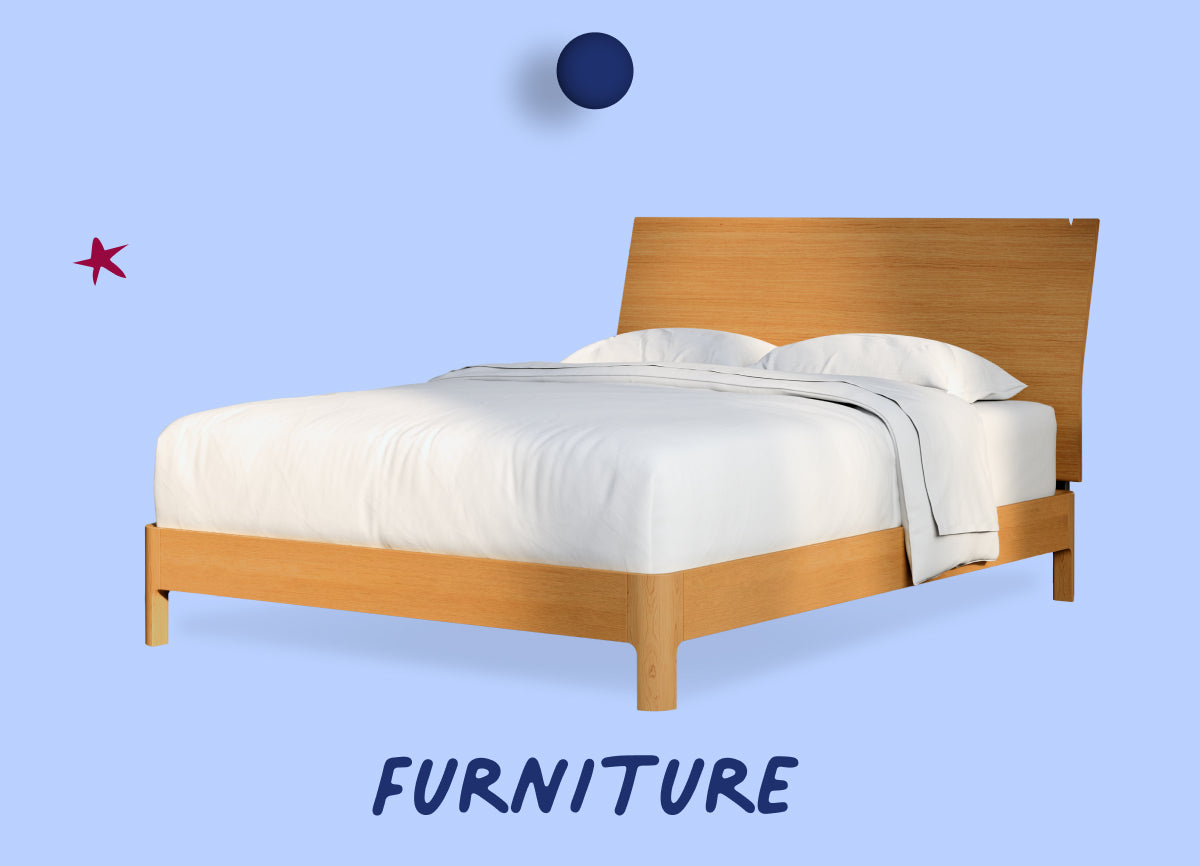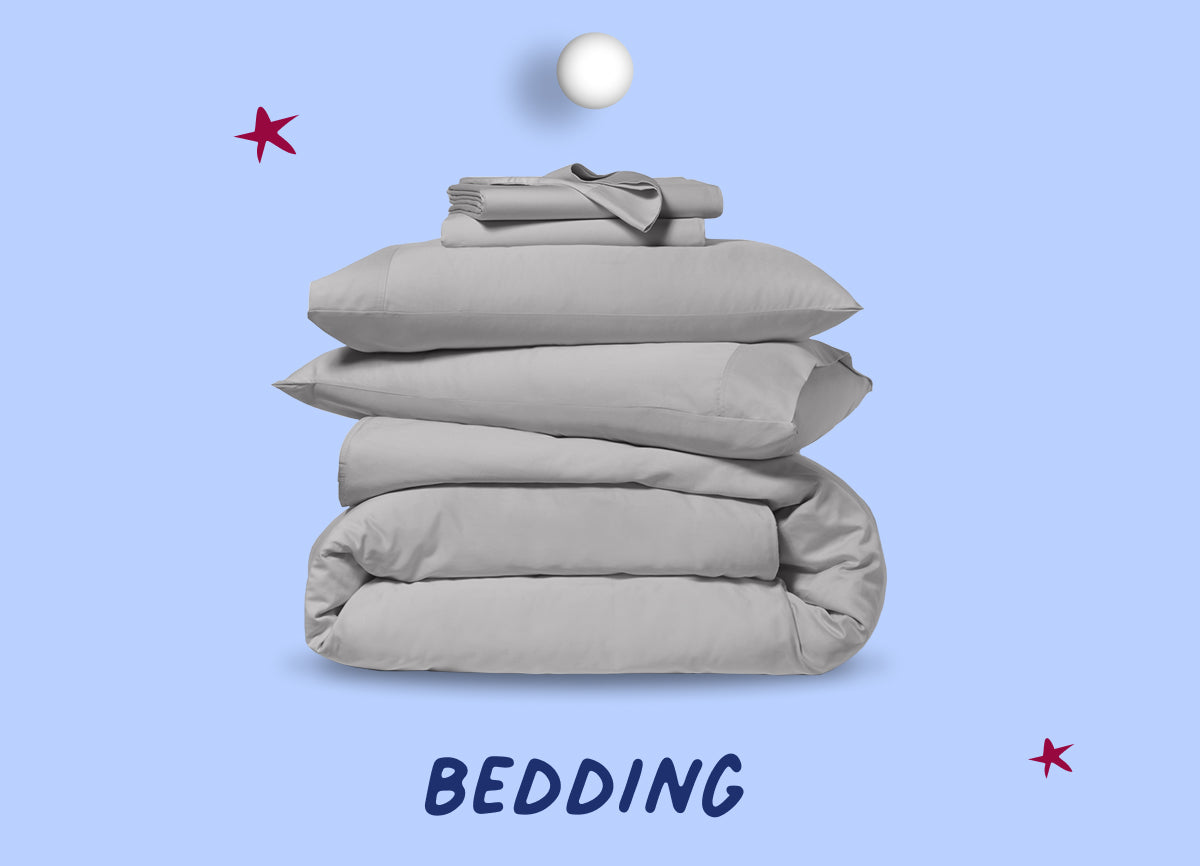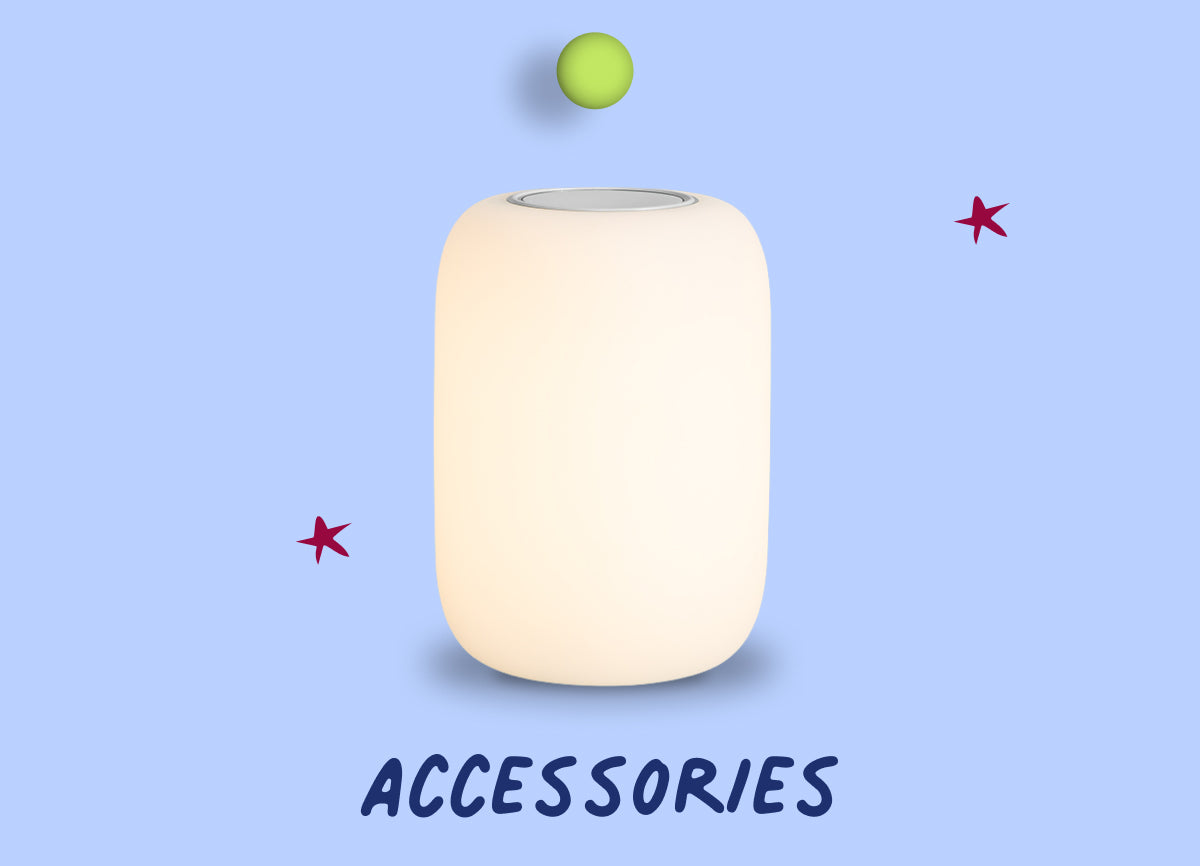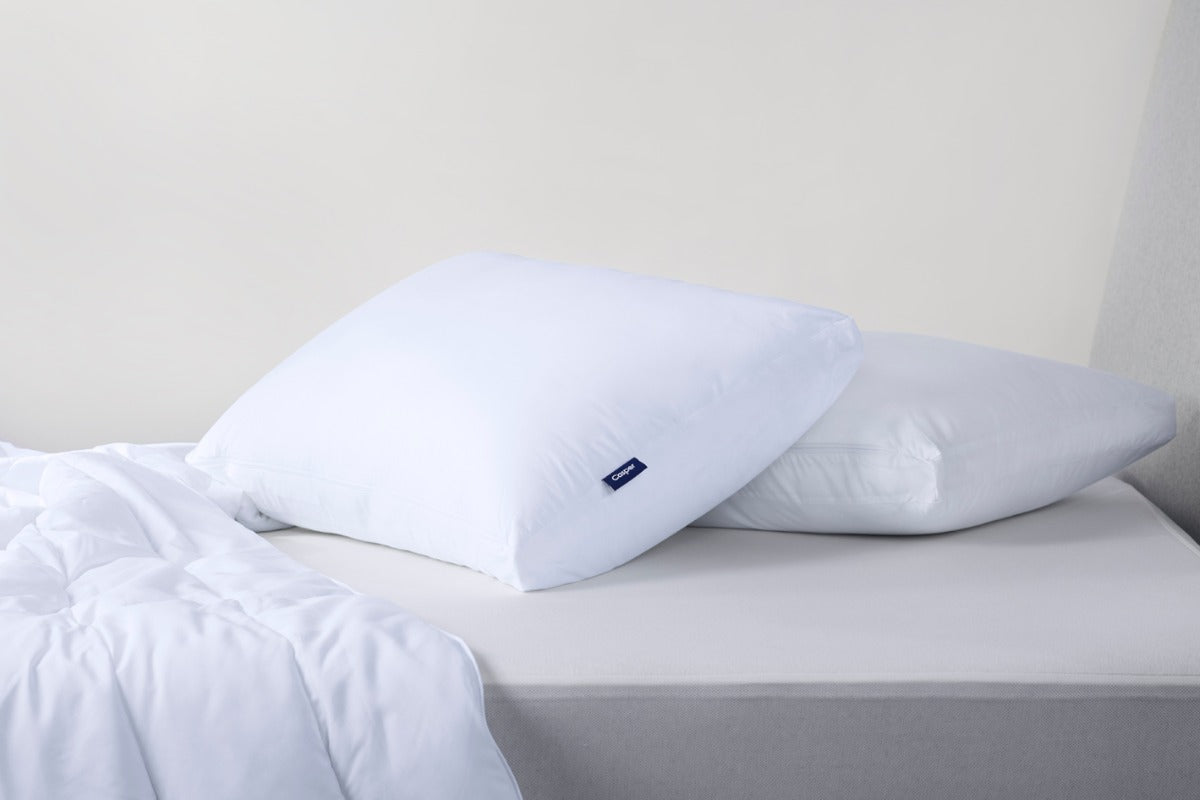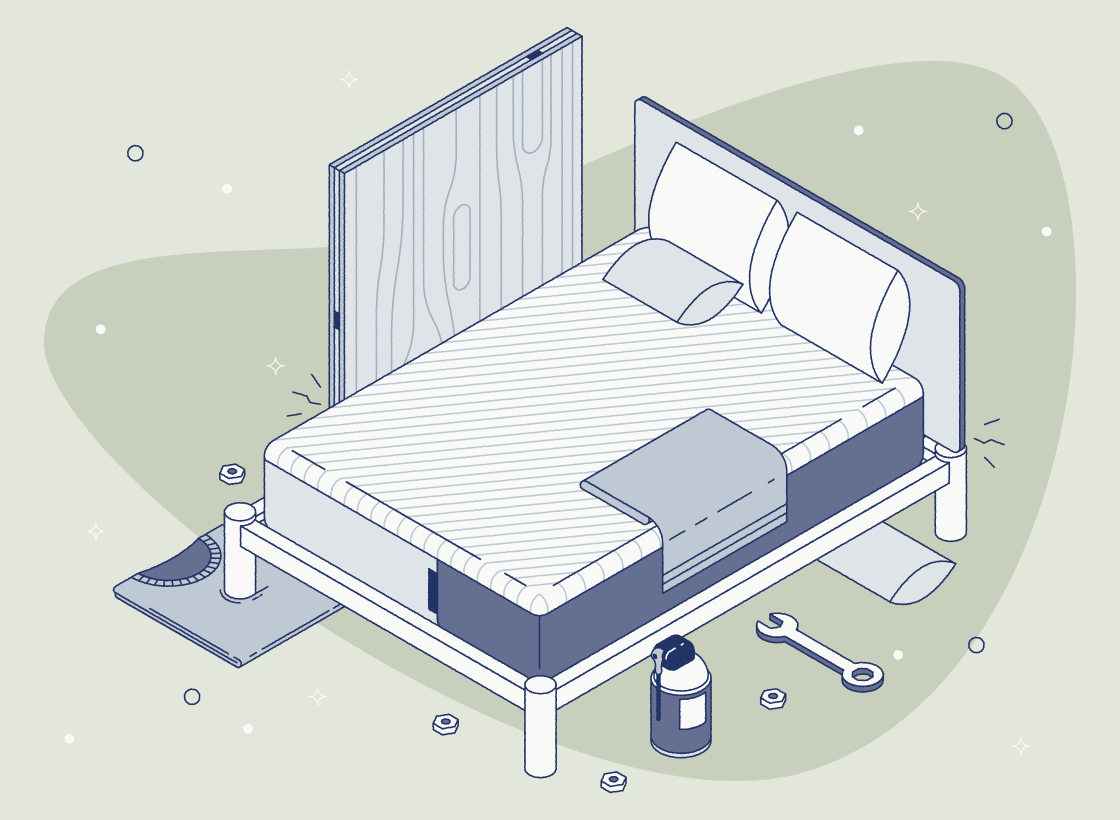Updated October 5, 2025
Most sleep experts recommend sleeping with one pillow under your head. Proper spinal alignment and, ultimately, your personal preference matter the most.
There are two types of people in this world: those who sleep with one pillow and those who sleep with a thousand of them.
Here at Casper, we’re not in the market of shaming your pillow count (or lack thereof). Every person has a bedtime routine that works for them, and that fact is worthy of a celebratory snooze.
That said, we are interested in the science of sleep. And that leads us to the question of how many pillows should you sleep with?
So, what does science have to say about the optimal number of pillows?
According to sleep experts, you should sleep with only one pillow under your head, however, preference and sleeping position often take the lead when it comes to considerations for the ideal number of pillows.
Read on to learn why we recommend sleeping with a high-quality single pillow.
You Should Only Need One Pillow
The funny thing about sleeping is that everyone does it differently. What might be the perfect amount of pillows for one person could totally throw off someone else’s slumber. With that in mind, there are some factors to consider when choosing how many pillows to sleep with.
In an ideal world, everyone would have a single pillow that fits all their needs. The right pillow should provide:
- Neck support – A neutral spine is the name of the game when it comes to getting a good night’s sleep. A sleeping pillow with the right amount of support will keep your spine in a neutral position, thus preventing a stiff neck and tight shoulders in the morning.
- Ample head space – A pillow that’s too small can put you in an awkward position—literally. If you tend to move around in your sleep, you’ll want a pillow with a good amount of surface area. Otherwise, you may find yourself waking up with your head flat on the mattress.
- Malleability – Depending on your sleeping position, the right pillow should conform to your body’s natural shape. Stomach sleepers will need a softer pillow that allows their head to sink in, while back and side sleepers may fluff, bend, or squeeze their pillow during the night. A good pillow should have soft, malleable material that doesn’t lose its structural integrity over time.1
Still, the question remains—why don’t all pillows meet these basic needs? And is the solution more or fewer pillows?
Everyone is Different
Everyone’s body is built differently, and different sleeping positions require different pillow needs.
Side and Back Sleepers
For side and back sleepers and people with wide shoulders, one sleeping pillow may not comfortably fill the gap between their head and the mattress. This lack of support in bed can lead to neck pain, poor quality sleep, and even headaches.2
Stomach Sleepers
For those who prefer stomach sleeping, a pillow with too much support may be the problem. A thick or firm pillow can tilt the neck too high, irritate the face, and disrupt breathing.
Hearing this, you might think that you should change the number of pillows you sleep with to match your body’s natural sleeping position—but that’s not exactly the case.
Does Your Build Change the Right Pillow?
Yes—body weight, shoulder width, and mattress firmness change how much you sink into the bed, which changes the gap your pillow must fill. The primary goal is comfort and neutral spinal alignment when side sleeping (your neck has limited sideways flexibility), so getting the pillow height right matters most here. This guidance is based on simple geometry: lighter bodies compress the mattress less (larger ear-to-mattress gap), while heavier bodies compress it more (smaller gap).
- Lighter sleepers (<130 lb): Because you sink in less, you typically need a taller/higher-loft pillow to bridge the larger gap—especially on your side. Back sleepers in this range may prefer medium loft; stomach sleepers generally do best with very low loft or no pillow.
- Average-build sleepers (about 130–230 lb): A medium loft is a good starting point for side sleeping. Adjust up if you have broader shoulders or a firmer mattress; adjust down if your shoulders are narrower or the mattress is plush and allows more sink.
- Heavier sleepers (>230 lb): Because you sink in more, you usually need a lower pillow height for side sleeping to keep the neck neutral. Back sleepers often land in low to medium loft in this range.
Shoulder breadth matters, too. Broader shoulders typically need more loft for side sleeping; narrower frames can be comfortable one step down.
Quick alignment check: Lie on your side and aim for a straight line from the back of your head through your spine. If your ear tips toward the mattress, add height; if your head tilts away from the mattress, remove height. Adjustable-fill pillows make these fine-tunes easy.
The Problem with Pillow Stacking
While sleeping with two or more pillows under your head each night may work for some people, pillow stacking can lead to its own set of problems that are worth considering, such as:
- The squished stack – Multiple thin pillows and one thick pillow provide two entirely different sleep experiences. While a single pillow with moderate thickness will usually hold its shape, two thinner pillows can create something called the squished stack. The squished stack occurs when two or more flimsy pillows are being squeezed together by the weight of your head. Repeated stacking can result in loss of structure and essentially leave you with two flat, misshapen pillows. Due to the loss of structure caused by pillow stacking, the recommended time frame for how often you should replace pillows will be shorter than usual.
- The tower – Another problem with multiple pillows is that they may be stacked too high—also known as the tower. When you sleep with your head at an incline, your spine loses its normal level of cervical curvature (which is just a fancy name for your neck’s natural curve). This can result in stiffness and even make falling asleep more challenging.
The bottom line: Sleeping with multiple pillows may seem like a supportive choice, but it could be disrupting your spine’s natural alignment. For this reason, sleeping with one thicker pillow under your head is generally the preferred option.
Pillow Loft by Sleep Position (With Inches)
The goal is simple: keep your head and neck in a neutral line with your spine. Choose a loft that fills the natural space between your head/neck and the mattress—no tilting up or sagging down.
- Side sleepers: high loft (>5"). Side sleeping creates the largest shoulder-to-mattress gap; a higher loft keeps your ear aligned over your shoulder without crunching the neck.
- Back sleepers: medium loft (3–5"). A mid-height pillow supports the natural curve of the neck so your chin doesn’t tilt toward your chest or lift too high.
- Stomach sleepers: low loft (<3") or none. Thin (or no) pillow helps prevent neck extension and lower-back sway that happen when the head is propped too high.
Quick tip: Pillow fill compresses differently (e.g., down vs. foam). If you like a softer, more compressible pillow, consider stepping up one loft category to land at the same “supported” height once you’re lying down.
Other Ways to Sleep with Multiple Pillows
While one pillow—more importantly, the right pillow—under your head may be ideal for neck and spinal alignment, that doesn’t mean you have to limit yourself to just one pillow overall. In fact, sleeping with multiple pillows can benefit other parts of your body, offering additional support where it’s needed most. Here are a few ways to incorporate more pillows into your sleep setup for maximum comfort and alignment.
Pillow Between the Knees
For side sleepers, sleeping with a pillow between your knees can do wonders for your spinal alignment. This simple adjustment helps to relieve pressure on your lower back and hips by preventing your top leg from rotating too far forward. The result? A more neutral spine, which can reduce discomfort and help you wake up pain-free. Just grab a soft, supportive pillow, place it between your knees, and enjoy the extra stability.
Pillow Under the Knees
If you’re a back sleeper, adding a pillow under your knees can help maintain the natural curve of your lower spine. By slightly elevating your legs, you reduce the strain on your lower back muscles, allowing them to relax more fully during the night. This technique is especially helpful if you experience back pain or have trouble getting comfortable on a flat mattress. The gentle incline helps promote better circulation and spinal alignment, making it easier to drift off into a peaceful slumber. Check out our blog to learn more about the best and worst sleeping positions for lower back pain.
Body Pillows
Body pillows are a versatile option that provides full-body support for side sleepers and pregnant individuals alike. A long body pillow can help cushion your knees, arms, and torso all at once, offering a comfortable, cradle-like experience. It’s perfect for those who toss and turn or who want a little extra coziness at night. Hugging a body pillow can also alleviate pressure on your joints and support proper posture, ensuring you get the restorative sleep your body craves. Learn more about the benefits of body pillows in our blog.
Finding The Right Pillow with Casper
So, how many pillows should you sleep with? If it’s a Casper pillow, one will do.
If you’re looking to ditch the multi-pillow life, Casper can help. We provide sleepers four unique types of pillows to fit their nighttime needs:
- The Original Casper Pillow – The Original Casper Pillow is filled to perfection with a supportive down alternative. Our unique pillow-in-pillow design combines the fluffiness of a single pillow with the support of two. Not to mention, the 100 percent cotton pillowcase remains cool and breathable on even the hottest nights.
- The Foam Pillow – Side and back sleepers who need neck support should look no further than the Casper Foam Pillow. Our three-layer design reinforces spinal alignment without sacrificing comfort.
- The Down Pillow – Filled with 100 percent ethically-sourced down feathers, the Casper Down Pillow is like sleeping on a cloud. Sleepers who value softness will appreciate the comfortable support this pillow provides. The 5-chamber design makes this an ideal pillow choice for back, side, and stomach sleepers alike.
- The Hybrid Pillow – Combining the best features of foam and fiber pillows for unmatched comfort, its outer foam layer ensures consistent shape and support without the need for fluffing, while the inner fiber core provides a moldable, marshmallowy feel. This innovative two-in-one design offers the softness of fiber with the reliable support of foam, making it ideal for sleepers who want both comfort and durability in one pillow.
There you have it — an answer to the age-old pillow debate. One pillow is a win, two can be a gamble, but a Casper pillow is always a safe bet.
Frequently Asked Questions
Are two pillows bad for your neck?
Stacking two pillows under your head usually lifts your neck into flexion, which can strain muscles and joints. Most people do best with one pillow that keeps the head level with the spine; use a second pillow strategically (between the knees for side sleepers, under the knees for back sleepers) rather than under the head. If you’re a broad-shouldered side sleeper who needs extra height, choose a single higher-loft or adjustable-fill pillow instead of stacking.
Should stomach sleepers use a pillow?
Often, a very thin pillow—or none—works best to avoid cranking the neck backward. If you like some support, aim for low loft (under ~3"). A small pillow under the pelvis can also help reduce lower-back sway.
Is sleeping with an arm under a pillow bad?
Tucking an arm under the pillow can pinch nerves and blood vessels (numbness/tingling) and tilt the head sideways, stressing the neck and shoulder. If it’s a hard habit to break, try a softer, lower-loft pillow so the head isn’t propped as high, and hug a body pillow to keep the shoulder and arm in a more neutral position. Over time, aim to keep the arm forward of the pillow rather than directly underneath it.

